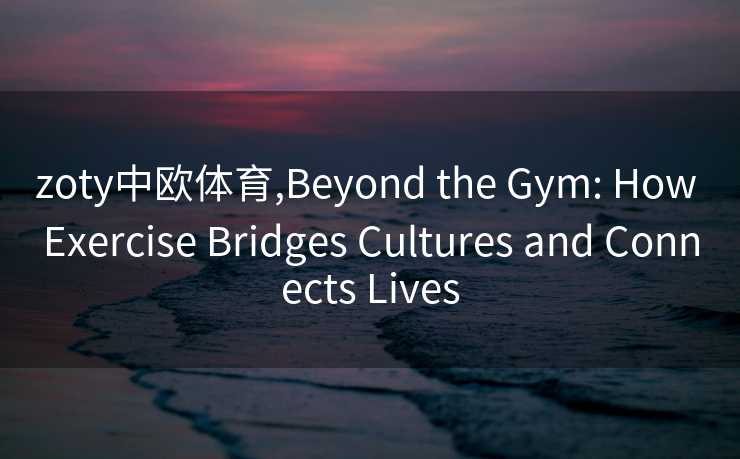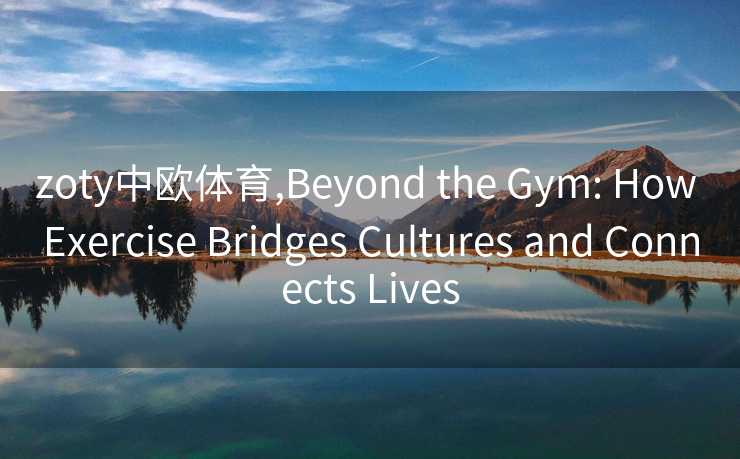In a world divided by languages and borders, physical exercise stands as a universal language—one that requires no translation, no dictionary, and no prior knowledge. From the sun-drenched beaches of Brazil to the misty mountains of Japan, from the bustling streets of New York to the quiet villages of Kenya, people move their bodies in ways that transcend words. Whether it’s running, yoga, or team sports, exercise is more than just a routine; it’s a bridge between cultures, a tool for mental resilience, and a celebration of human potential.

The Ancient Roots of a Modern Phenomenon
Exercise has always been intertwined with culture. In ancient Greece, gymnasia were not just training grounds but social hubs where philosophers debated while athletes trained. The Olympic Games, born in 776 BCE, united city-states through competition—a tradition that continues today, with English terms like “marathon” (from the Greek marathōn) and “triathlon” (combining Greek roots for “three” and “contest”) now global. Across Asia, practices like tai chi (Chinese for “supreme ultimate fist”) and yoga (Sanskrit for “union”) have traveled far beyond their origins. Today, you might find a group of seniors practicing tai chi in a London park or a yoga class in a Tokyo office—proof that these ancient disciplines speak to modern needs.
Exercise as Cultural Exchange
Modern fitness trends further blur linguistic lines. Take parkour, a discipline born in France that combines acrobatics and urban navigation. Its name, derived from the French parcours (“route”), has become a global phenomenon, with enthusiasts in cities worldwide sharing techniques through videos and workshops—even if they don’t speak the same language. Similarly, crossFit, a high-intensity workout system, uses English terminology (WOD for “workout of the day,” box for gym) but adapts to local contexts: a CrossFit box in Mexico might blend traditional Mexican dance moves into warm-ups, while one in India might incorporate kabaddi (a contact sport) into conditioning drills. These hybrid forms show how exercise evolves, absorbing cultural flavors while retaining its core purpose: moving the body.
The Science of Sweat: Why Exercise Unites Us
Beyond culture, exercise unites us biologically. When we work out, our brains release endorphins—natural chemicals that reduce pain and boost mood. This “runner’s high” is experienced universally, whether you’re a Kenyan long-distance runner or a desk-bound professional doing yoga at home. Studies also show that group exercise strengthens social bonds: a 2023 Harvard study found that people who exercised in groups had 30% higher oxytocin levels (the “love hormone”) than those who worked out alone. This explains why running clubs, cycling groups, and fitness classes thrive globally—they turn individual effort into collective joy.
The Future of Fitness: Inclusive and Innovative
As technology advances, exercise becomes even more accessible. Apps like Strava (for tracking runs and rides) or Nike Training Club (for guided workouts) use English interfaces but serve users in over 100 languages. Virtual reality gyms let people “travel” to Paris or Bali while cycling, merging fitness with cultural exploration. Meanwhile, grassroots movements push for inclusivity: adaptive sports for people with disabilities, free community gyms in underserved areas, and campaigns promoting body positivity—all using exercise as a tool for empowerment.
In the end, exercise is more than physical—it’s a testament to our shared humanity. It reminds us that regardless of where we come from or what language we speak, we all seek health, connection, and growth. So next time you lace up your sneakers or roll out your yoga mat, remember: you’re not just working out—you’re joining a global conversation, one squat, one stretch, one step at a time.
Word count: ~650
